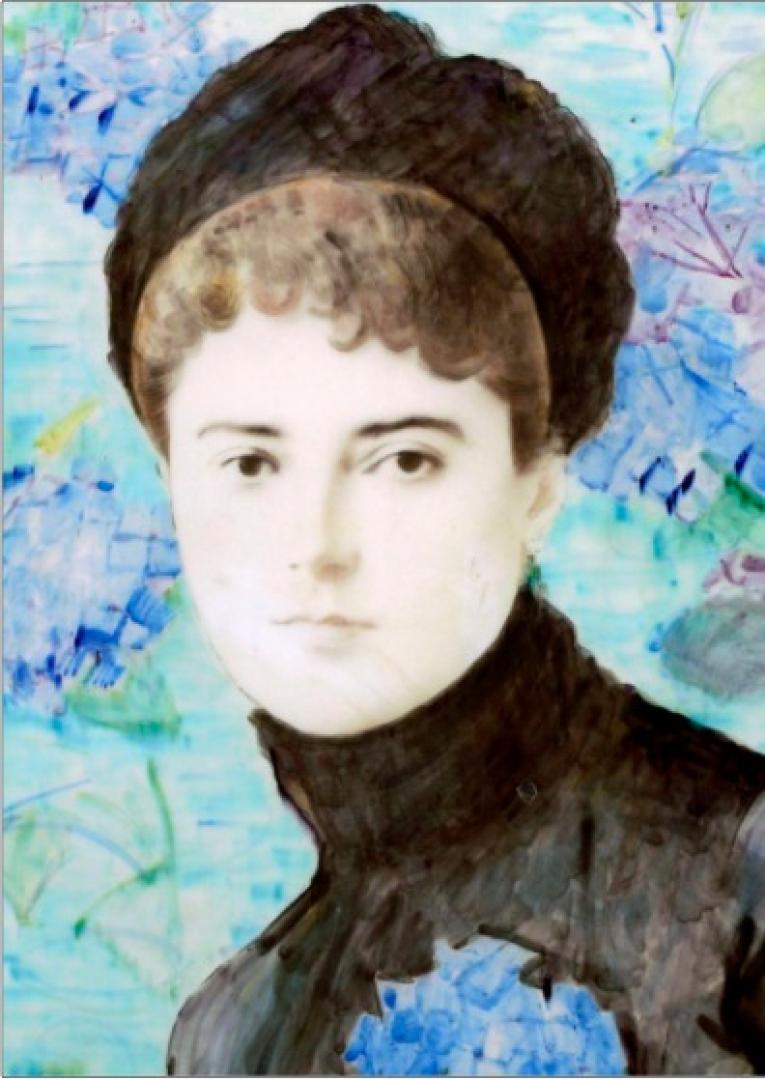In the latest of her occasional columns, Dorothy Blundell takes a sideways look at some of the unique items on show at The Bowes Museum, where she is a volunteer.
IN a Bowes Museum guide book dated 1996, there is a picture of a small porcelain bust of a rather forlorn looking woman. It is titled The Bride. Made by Worcester, the enamelled colours are meant to make it look more lifelike, but instead they seem to add to the feeling of sadness from her expression beneath her spotted net veil.
And yet, the bridal veil which dates back to Greek and Roman times was supposed to hide a bride “from evil spirits who might want to thwart her happiness” .
The figure was bought by John and Josephine Bowes at the London Exhibition of 1862 and is typical of many of the purchases they made at various international exhibitions in the 19th century.
More than 150 years later, two 21st century acquisitions of paintings by the museum include another veiled lady and a smartly dressed unidentified young woman.
Both would undoubtedly have appealed to Josephine’s taste had she lived longer than her 48 years.
Lucien Levy-Dhurmer produced his portrait, entitled Autumn Bride – an allegory of decaying beauty – 22 years after Josephine died in 1874.
The “bride” , who is wearing a veil headdress decorated with leaves, was Marguerite Moreno, stage name of Lucie Marie Marguerite Monceau.
She, like Josephine before marriage to John, was an actress.
Moreno was very famous in the late 19th and early 20th centuries, so much so, it is said she was “almost a second Sarah Bernhardt” , for whom she once worked, and the “sacred muse of Symbolism” .
For five years she was married to French writer Marcel Schwob. He was so madly in love with her that after their first meeting in 1895, wrote: “I am at Marguerite Moreno’s complete disposal. She is allowed to do everything she wants with me and that includes killing me.”
He died of pneumonia while she was away on tour in 1905. She died in 1948, aged 76.
Levy-Dhurmer (1865-1953) was a French Symbolist/art nouveau artist whose works include paintings, drawings, ceramics, furniture and interior design.
He first exhibited at the Paris Salon of 1882 (three years before John Bowes died) where he showed a small ceramic plaque.
His later work earned high praise for attention to detail in capturing “a Pre-Raphaelite haze of melancholy” .
In this oil on panel painting he used a powdered gold background which was popular in ceramics at the time and so the painting is a cross-over between fine and decorative arts in 19th century France.
Which brings us to a ceramic plaque of the unidentified woman.
No veil this time, but a rather large blue corsage – a hydrangea. It is by Paul-Cesar Helleu (1859-1927), a French painter and designer who was among the most celebrated artists of the Edwardian era in both Paris and London.
It is among many images of beautiful women produced by Helleu when he worked for pottery maker Theodore Deck.
This plaque, however, with its background of blue hydrangeas, is in full Impressionist style. It is believed to date around 1885.
The eccentric dandy Count Robert de Montesquiou, adopted the flower as one of his motifs and commissioned Helleu to paint panels of them for his rooms in Paris as well as for the cover of his book of poetry, Les Hortensias Bleus (The Blue Hydrangeas), published in 1896.
This was an era of beauty: La Belle Époque, as it is known.
Among the many women whose beauty he immortalised was Coco Chanel.
She had beige as one of her signature colours on his advice because it was ‘the colour of the sand on the beach at Biarritz in early morning’. Helleu’s son Jean and grandson Jaques became artistic directors for Chanel perfume, the latter dying aged 69 in 2007 – just a few months after the ceramic plaque arrived at The Bowes Museum.
The museum has now reopened to visitors. See full details at thebowes museum.org.uk.






